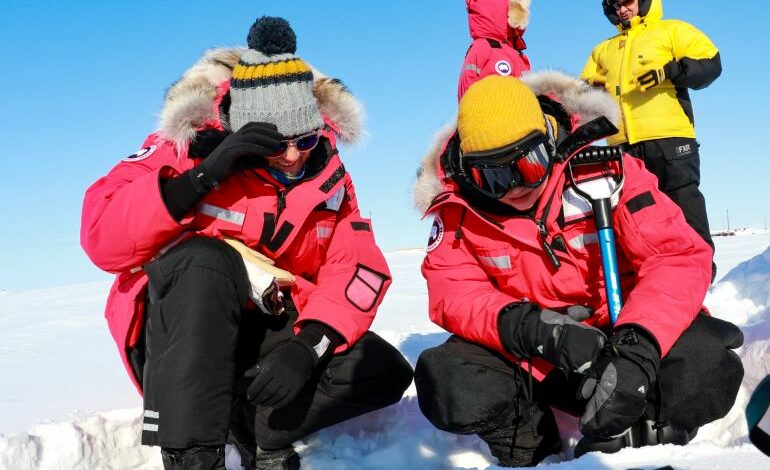Canadian Arctic Snow School hopes to boost climate fight

Marie Dumont’s face is flush. It is a windy Tuesday afternoon in the small hamlet of Iqaluktuuttiaq, in Canada’s northern territory of Nunavut, and the temperature outside is roughly -25 degrees Celsius (-13 degrees Fahrenheit).For much of the past week, Dumont has been working in these subzero temperatures alongside a dozen young scientists and students to better understand Arctic snow, and what it can say about how to address climate change-related challenges.
She is part of a group of 40 researchers, students and Inuit knowledge-holders participating in the first-ever Arctic Snow School, held in early April at the Canadian High Arctic Research Station (CHARS).
“I love it … some people know more about snow than me,” said Dumont, a research scientist and head of the Snow Research Center at the National Centre for Meteorological Research in Grenoble, France.
“The school is super diverse and everyone here comes from different countries, different backgrounds, and different science fields.”Studying snow
The Arctic Snow School is a joint project between two institutions in the Canadian province of Quebec: Sentinel North at Universite Laval and the Groupe de Recherche Interdisciplinaire sur les Milieux Polaires (GRIMP) at the University of Sherbrooke.
The goal, organisers say, “is to help train a new generation of scientists capable of solving the complex problems of a changing North”.
Changes in this massive territory also have global implications; as Greenpeace explains, “the Arctic helps to regulate the world’s temperature, so as more Arctic ice melts the warmer our world becomes”. Understanding how the environment is changing, and how quickly, can help craft solutions, experts say.
Alexandre Langlois, co-lead of the initiative and a professor at the University of Sherbrooke, said studying Arctic snow can help researchers better assess how Arctic vegetation is changing, what access animals such as lemmings and caribou will have to food and safe habitats, and new challenges faced by Inuit who travel the region to hunt and fish.










